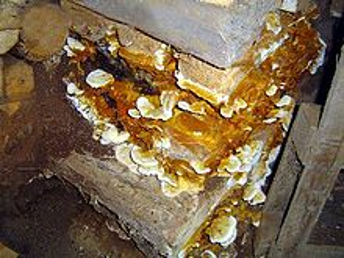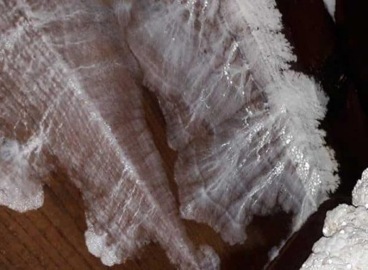What is Dry Rot?
- Dry rot is the most destructive and serious form of fungal decay.
- It is a wood destroying fungus, known as – Serpula Lacrymans
- It can spread without moisture been present
How does Dry Rot occur?
- For Dry rot to occur, the optimal wood moisture content is 20-30%.
- Normally caused through faults within a building such as; rising dampness, leaking downpipes / leaking gutters, penetrating damp, lack of ventilation and so on.
What are the symptoms of Dry Rot?
NOTE: As Dry Rot is extremely disruptive and damaging it is important to instruct a specialist to inspect the areas on concern for the correct diagnosis.
Some of the symptoms of Dry rot are as follows:
- Deep cracks spanning across the grain, with mycelium growth (white strands)
- Fungus could potentially have a yellow tinge to it
- Timber can turn dark brown in colour and dry
- The timber can crumble and split
- In special cases, large flat mushroom fruiting bodies will be evident
There are four main stages to the life cycle of Dry rot:
- Spores – These spores are in active unless the right conditions present themselves.
- Hyphae – A cobweb like strand, which extract the moisture from the timber.
- Mycelium – This resembles a cotton-wool like substance.
- Fruiting Body – Dry rot develops into a mushroom like form.
Unfortunately, it is difficult to identify dry rot within the early stages of the production of Dry rot. If it is not identified early on, the consequences can be detrimental to your property.
What are the defects associated with Dry Rot?
Dry rot can cause severe damage to your property as it can spread rapidly, destroying timber and damaging the structural integrity of the building.
What are some of the Remedies associated with Dry Rot?
The most important factor relating to treating Dry rot (within Timber) is identifying it early, the source of the moisture and rectify the cause.
The next step is to identify the areas of timber affected. It is essential a specialist is instructed to inspect the damage and propose the correct and suitable remedial works.
This would normally entail:
- Removing the defective timbers to a specific point past the last signs of the fungal growth;
- Remove all spores and clean down all areas with a stiff brush or something similar
- The timber must be replaced with a pre-treated timber.
NOTE: This process is strictly for Dry rot within timber. Dry rot can also occur within Masonry and the remedial works for this do vary.
The remedial process can be expensive if not done correctly. A Dry rot survey is highly recommended prior to any works taking place.
If you believe you have Rot in your home, speak to one of our surveyors today to find out more information on our range of surveys and for further advise. Risk Averse Ltd covers the whole of the UK although we are located within Littleborough, Rochdale.



